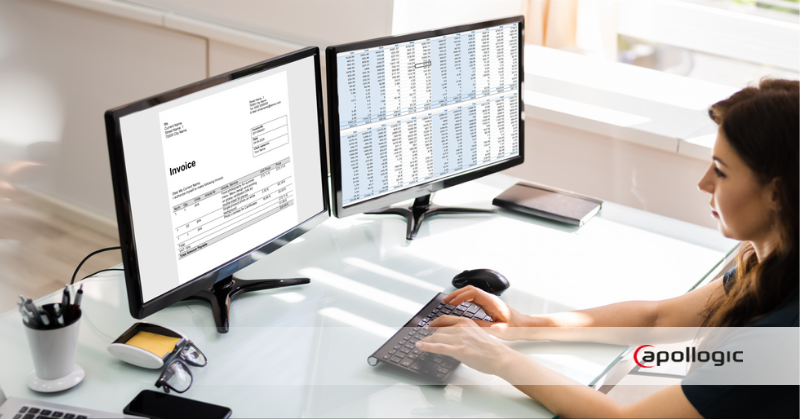Strategic sourcing with SAP Ariba Risk Management

Marta Kaczmarek
SAP Ariba Consultant

Anna Kolinczat
SAP Ariba/SRM Consultant
- 14th May 2020
- Trends in SAP
- 5 min

Many buyers ask themselves questions about suppliers’ ranking during an audit in their company when negotiating contracts or making decisions on further cooperation with their supplier. Searching for suitable partners and then segmenting them is one of the buyers’ main tasks, and, as business reality shows, it’s quite a challenge at the very beginning of demand categorization.
To fully understand the essence of the strategic approach to supplier risk management and the importance of exercising due diligence when selecting a supplier, it’s worth reading the opinions of purchasing representatives.
„The basic limitation is the different approach to category management in various organizations. Everyone calls groups of materials with a similar function in a way that corresponds to their business profile. When we know which companies declare themselves to be the manufacturer of a given type of material for a particular niche application, it’s easier for us to search the Internet or gain so-called «market intelligence». On the other hand, if something that is a covering material for the manufacturer and for me, e.g., filter fabric, it’s difficult to find alternatives”.
Buyer with many years of experience in automotives
How to make safe and smart decisions when choosing a supplier?
It would seem that the buyer, after the classification of the goods, has already had the most challenging part of the job done, because it’s enough to enter the name or category in the search field of any web browser, and the sellers will overwhelm us with offers. What is the reality of the purchasing department representatives’ work? How do they know that a seller is trustworthy and the goods they offer are the best?
„Market intelligence comes together in a variety of ways – from the basic support of Google, capturing key information about the competitors of our current suppliers, verifying companies’ financial reports, to reference visits. The basis of a purchasing employee’s duties should be to travel around the offices of potential partners to confront paperwork with reality. How can we work efficiently if we don’t understand how the things we buy have been produced? What affects costs, and how is it used? You also need to know your own business – the production process, the company’s strategy, and its needs”.
Category Manager in the manufacturing industry
Once we find a supplier that meets our expectations, the negotiation stage follows before signing the final contract. The buyer must be well prepared for the talks and have an initial idea of what quality the future supplier represents.
„Prior to meetings, we usually have to collect turnover and delivery data from one system, complaints data from another, obtain supplier ratings from manually managed files and additionally send emails to representatives of other regions or departments asking for feedback. Having access to this information in the supplier profile, together with a clear graphical presentation, is ideal…”.
Buyer from the manufacturing industry
Companies with a strategic approach to purchasing use supplier segmentation not only for reporting purposes, but above all to create strategies for particular assortment groups, such as the optimization of the seller base, electronic catalogs, auctions, and framework agreements with suppliers. For the strategy to be even more effective, it’s necessary to consider expanding the supplier base with foreign partners. It shouldn’t only result from a need to find the cheapest purchasing sources of purchase, but also those that offer us innovation and the latest technology.
Responsible business with SAP Ariba Risk Management

Monitoring events affecting the supply chain continuity: political situation in the supplier country, natural disasters, corruption, fraud

Verification of companies’ reputation and involvement in social and environmental issues

Aggregation of a huge amount of data by integrating with SAP ERP, SAP Ariba and Ariba Network

Access to more than 600,000 private and public sources: information services, government data, crisis management systems and much more
How does SAP help achieve procurement goals and manage risks in the supply chain?
SAP Ariba Supplier Risk Management supports purchasing professionals in making smarter and more secure decisions before a transaction. When buyers are well informed, they make decisions that minimize disruption to the supply chain, prevent financial damage, and loss of reputation. It also provides a high level of assurance that information from suppliers is up-to-date and reliable. SAP Ariba Supplier Risk is a market-leading solution for evaluating supplier risk with customized views. This tool allows you to segment suppliers based on their exposure to risk. With full insight into information about each supplier, you can make on-time business decisions and build long-term relationships with partners.
To provide the most complete risk picture possible, SAP Ariba Supplier Risk also works with external data providers. One of the best-known companies delivering commercial information is Dun & Bradstreet – an American business intelligence organization responsible, among other things, for creating commercial reports and assigning DUNS numbers as a confirmation of registration and business activity.
EcoVadis has joined SAP Ariba Supplier Risk in data analysis, providing sustainability, risk, and performance assessments for global supply chains. This gives SAP Ariba’s customers the opportunity to evaluate suppliers and verify that they meet sustainability requirements in terms of environmental and social risks before they decide to start procurement projects. If a customer receives a license from EcoVadis and sends a list of suppliers for evaluation, the environmental and social charter will be completed with information provided by EcoVadis.
Major supplier management challenges
SAP Ariba Supplier Risk package is the answer to the most common challenges faced by buyers. The key benefits of this solution are:
✓ A unified 360⁰ view and a comprehensive supplier risk profile,
✓ Access to more than 600,000 data sources for ongoing monitoring of regulatory, legal, environmental, social and operational risks,
✓ Flexible risk assessment model based on a large set of data,
✓ Self-service portal for working with suppliers to assess and reduce risks,
✓ Additional subscriptions available from external content providers for monitoring in areas such as compliance, forced labour, and financial risk.
This integration provides consistency in the purchasing process and facilitates the achievement of sustainability, brand protection, growth and customer loyalty, and investor trust. Above all, users no longer need to log on to multiple applications to access a supplier’s sustainability scorecard.
Do you want to make the right business decisions?
- On 14/05/2020







0 Comments